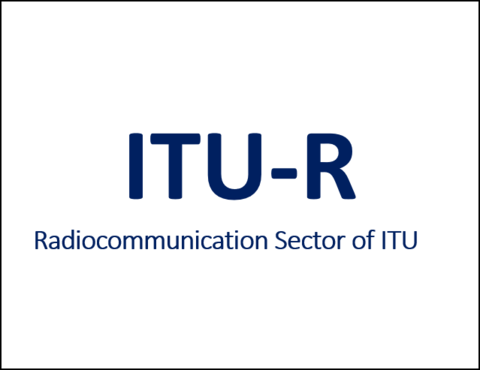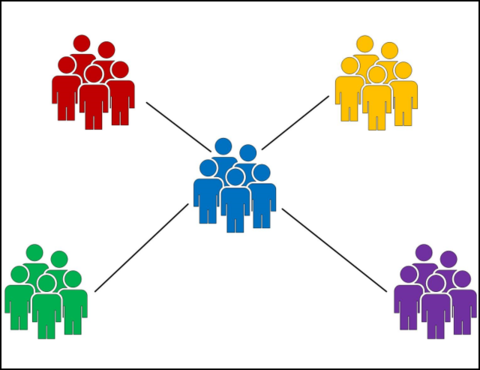Summary
The exponential increase in wireless data transmission from smartphones has led to the saturation of the sub-6 GHz bands forcing providers to explore the use of millimeter-wave (mmWave) regime and eventually to the sub-Terahertz (sub-THz) regime, what we refer to collectively as NextG. To compensate the high propagation loss at mmWave and sub-THz, phased array antennas with high gain and narrow beamwidth will be employed. The high directionality of NextG systems will fundamentally change channel propagation models and channel sounding systems and techniques used to measure the model properties. The National Institute of Standards and Technology is on the forefront of defining that change, supporting the need currently facing the wireless industry to accurately characterize wireless propagation in support of next generation wireless communications systems.
Description
NextG Channel Measurement
NIST has designed and assembled a number of mmWave channel sounders: from the first generation of electronically switched horn antenna arrays, moving to virtual phased-array, and most recently we are transitioning to real phased-array channel sounders. Several features make our systems unique: a complete angle-delay channel scan in microseconds, the 2 – 10 GHz ultra-wide bandwidth, untethered design capable of mobile measurements up to 30 km/h, recording the position and velocity of the receiver through laser-guided navigation system indoors and military-grade differential GPS system outdoors.
Phased-Array Channel Sounders
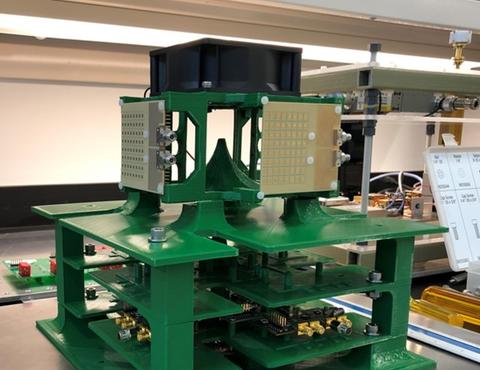
Phased-array antennas generate electronically steerable beams by phasing the individual elements of the array. (learn more)
Virtual-Array Channel Sounders
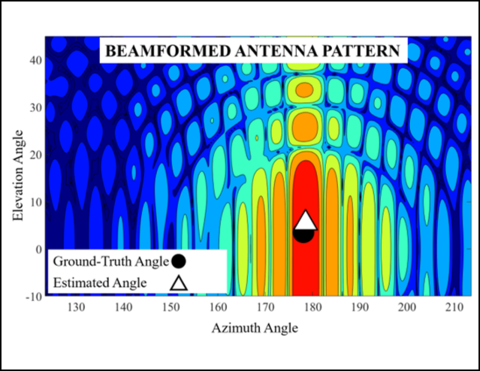
Millimeter-wave channel sounders are much more sensitive to phase drift than their microwave counterparts. (learn more)
Switched-Array Channel Sounders
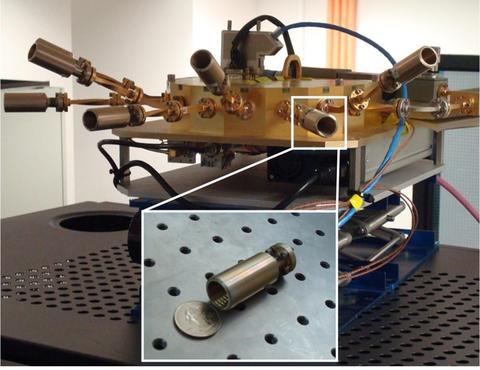
Our first generation of mmWave channel sounders are based on switched arrays of horn antennas. (learn more)
NextG Channel Models
The precise calibration and verification methods for mmWave systems enable us to develop accurate channel propagation models from our field measurements. We made significant progress in characterizing path-loss models, outdoor map-based dispersion model for an urban-canyon environment, small-scale fading, and penetration loss due to building, human and vegetation. More recently we conducted measurements that were fed to machine learning based algorithm to generate models that capture the environment information and various material properties.
AI-Assisted Channel Modeling
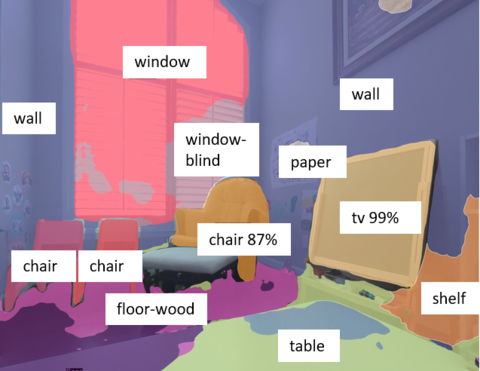
Our state-of-the-art NextG channel sounders can capture an electromagnetic “image” of the channel. (learn more)
Small-Scale Fading at mmWave
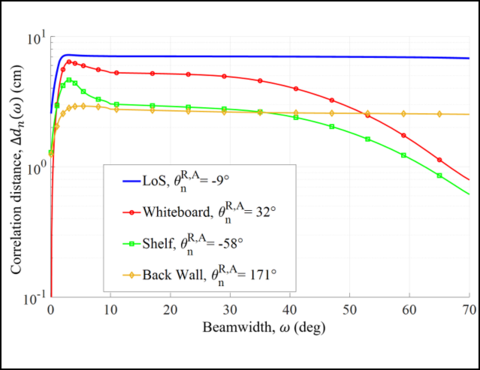
The strength of a received signal can fluctuate up to tens of dBs over the small-scale distance of just wavelengths. (learn more)
Quasi-Deterministic Channel Model
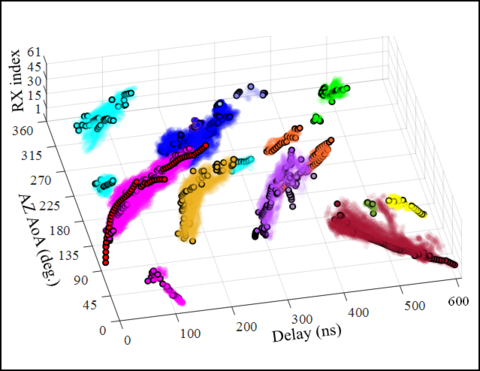
We reduced a set of Quasi-Deterministic model parameters from our 28 GHz urban channel measurements. (learn more)
Penetration Loss
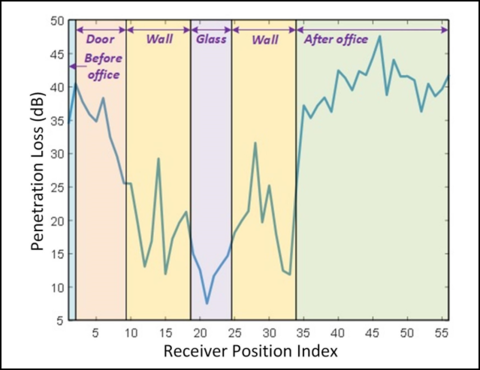
Penetration loss of an office building in indoor-to-indoor and outdoor-to-indoor mobile scenarios was investigated. (learn more)
Human Presence
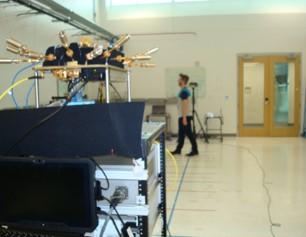
We developed a hybrid geometrical-empirical model for human presence at millimeter-wave frequencies. (learn more)
Attenuation in Vegetation
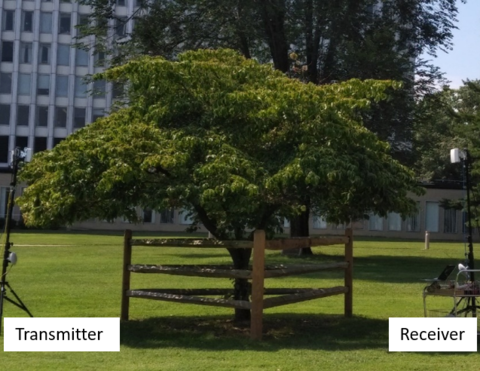
In order to explore attenuation due to vegetation, NIST conducted measurements on seven types of trees at 60.5 GHz. (learn more)
External Collaborations
We conducted numerous measurement campaigns to collect propagation data for reliable estimation of channel parameters and contributed results to three ITU-R Recommendations. Following NIST mission to support industry, we are sharing high quality measurement data with tool vendors and working on raytracing tuning, tree modeling, and human presence. Over the past year, we also worked with many organizations on benchmarking methodologies through the NextG Alliance.
NextG Alliance
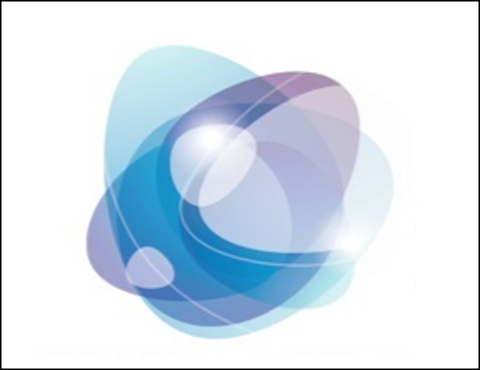
NextG Alliance members help rapid development of accurate and predictive channel models. (learn more)


